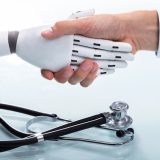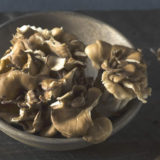In 1993 the number of office visits made to alternative healthcare providers in the USA exceeded those made to conventional medical doctors and hospitals for the first time ever. Since then the utilization gap between alternative treatment and conventional medicine has continued to grow. The past 20 years have demonstrated that a growing portion of the American public is open to alternative and complementary approaches to their healthcare. And, since many of these visits are made for general health improvement and wellness, it is clear that Americans have tuned in to the proactive power of natural healing modalities.
The following is a list of some of the new and not so new therapies that will be big in 2013.
- Acupuncture: The grand dame of alternative medicine, this well-known modality gets top billing based on its continuing growth and popular acceptance. With volumes of supportive scientific evidence and a broad therapeutic arsenal (needling, herbal therapies, cupping, auriculotherapy, etc.) the licensed acupuncturist is now widely accepted as a primary healthcare provider – a level of respect they should have been given decades ago.
- Transcendental Meditation (TM): The need to find more effective ways to deal with stress in our society has led many to seek relief through some form of meditation. Indeed, healthcare practitioners of every stripe are recommending and using meditative practices themselves to enhance well-being and promote balanced health. TM is practiced all over the world by average Joes and such luminaries as Clint Eastwood, Jerry Seinfeld and Dr. Oz. This non-religious, natural, effortless approach to balance and self-development is supported by volumes of scientific evidence. Among the proven benefits are: improved brain function and a healthier cardiovascular system.
- Ayurvedic Medicine: It is the oldest continuously practiced medical system in the history of the world. Translated it means the “Science of Life” and offers an individualized approach to treatment based on analysis of constitutional body type (Dosha). In achieving balance of the doshas, ayurvedic medicine allows the inner intelligence of the human body to promote homeostasis and self-repair mechanisms. In practice, the Ayurvedic healer teaches each patient the simple lifestyle changes and herbal therapies that gently restore balance, healing and long-term illness prevention.
- Nutritional Therapeutics: Far more than three square meals and a multi-vitamin, modern day nutrition has become a therapeutic modality for treating everything from obesity to chronic disease. As the incidence of illnesses like metabolic syndrome and celiac disease grows, the need for professionals to provide nutritional guidance and supplemental interventions has grown programs to receive training in prescriptive nutrition and new educational opportunities. For instance, the Centers for Integrative Nutrition are preparing students to meet the growing demand for nutritional therapies. This category represents one of the fastest growing areas in the field of alternative health.
- Mindfulness Massage: This creative combination of two effective stress-relief techniques, massage and mindfulness helps the client achieve a deeper state of relaxation very quickly. By using techniques such as breath work, focused relaxation and body scans (concentrating on the body part that the therapist is attending), the therapist coaxes the client’s attention away from personal stressors and brings it to focus on attending to his/her physical being. This is a simple, effective new approach to making a time-honored therapy even better.
- Earthing: This growing movement is based on the concept that the earth contains an electrical charge that is undetectable to humans but is an important contributor to our (and probably all living organisms’) overall health and well-being. The theory, supported by recent research, holds that by walking barefoot, sitting or lying on the ground for a period of time each day creates a connection to the planet’s natural energy field. This electrical connection then stimulates the body’s natural self-healing mechanisms. This is an easy, no-cost and risk-free theory to test for yourself. Worst case scenario, you waste a half an hour walking around your backyard in your bare feet.
- Wine Baths: Purported to be an aromatherapy that reduces stress and stimulates pleasure centers in the brain, spas across the country are offering wine baths, citing the dual benefits of stress reduction and antioxidant therapy for your skin. Stands to reason that if wine has beneficial health effects taken internally, used in this manner it could be therapeutic for the outer being as well. Better yet, enjoy a glass of that earthy, full-bodied Malbec while you soak in it.
- Medical Marijuana: In the last election, four more states approved the use of marijuana for medical reasons, bringing the total to 18 states and the District of Columbia. Clearly, the tipping point has been reached and marijuana will begin to find its way into mainstream healthcare having proven its efficacy in glaucoma, epilepsy, HIV, dementia, end-stage disease, and many other maladies. The trend is in full motion and M.D.’s across the nation will begin caving in to patient’s demands for prescription cannabis as word gets around. So don’t be surprised if you see Uncle Charley “torching a spliffy” on the back porch before Thanksgiving dinner next year. Just warn him not to get seed burns on your good tablecloth.
- Employer Sponsored Wellness Programs: “Wellness and prevention are taking a larger role in the new healthcare landscape,” according to Tom Fogarty, M.D., CMO for Concentra, the nation’s largest provider of employer healthcare benefits. With the continuing rise of healthcare costs, more and more employers will shift their focus to rewarding good health habits and penalizing unhealthy behaviors. The long-term view is that reduced annual claims will improve the companies experience rating with the insurer and control or lower the premiums. This is good news for those who already practice a healthy lifestyle and would like to see their costs reduced as a result. For those who wish to continue their risky habits, be forewarned, it may begin to cost you more.
- Taxing Fat: 2013 will be remembered as the year that people became financially accountable for their lifestyle choices. Or, it will be known as the first volley in the assault on the right to choose. . .your food. However it is politically spun, this year we will begin to see states imposing a tax on foods identified as contributing to obesity. The rationale will be to provide a deterrent to people making bad food choices. In reality it will be another way in which governments attempt to bulk up revenues. If history proves true (other countries have tried this and failed) there will be no appreciable reduction in obesity rate. Nonetheless, good can still come from it if these tax revenues are contributed to the Medicare fund (studies show that the greatest drain on Medicare resources is from obesity and its complications).
There you have it. Of the many new choices on the horizon for alternative healthcare in the coming year, these are some of the most interesting, important and controversial.




